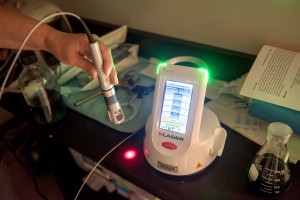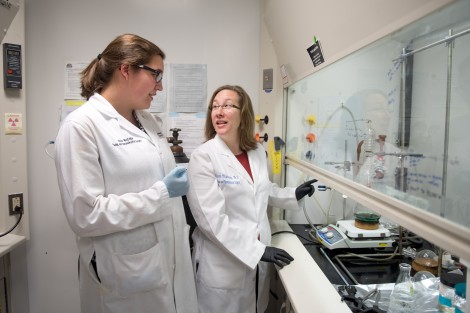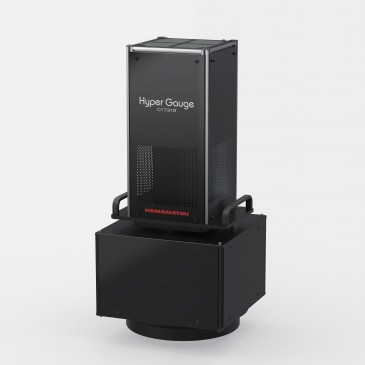
Researchers at Wake Forest Baptist Medical Center in Winston-Salem, North Carolina (US), have developed a fluorescing nanoparticle that can find tumors, light up on arrival and, activated by light, generate heat to destroy the cancer cells. The research breakthrough could solve a major challenge in cancer therapy: identifying and locating very small tumors and treating them before they metastasize.
“The fluorescing polymer nanoparticles were designed to serve a dual purpose,” says study lead author Nicole Levi-Polyachenko, PhD, associate professor of plastic and reconstructive surgery at the Wake Forest School of Medicine. “They can fluoresce, and they can generate heat when stimulated with near-infrared light.” 95% of the hybrid donor-acceptor polymer particles — or H-DAPPs — are composed of the fluorescent polymer Poly[(9,9-dihexylfluorene)-co-2,1,3-benzothiadiazole-co-4,7-di(thiophen-2-yl)-2,1,3-benzothiadiazole] (PFBTDBT10) and 5% of the heat-generating component comprise Poly[4,4-bis(2-ethylhexyl)-cyclopenta[2,1-b;3,4-b']dithiophene-2,6-diyl-alt−2,1,3-benzoselenadiazole-4,7-diyl(PCPDTBSe).

“For fluorescence excitation, 465 nm was used to excite PFBTDBT10, which normally fluoresces at 650 nm,” the researcher reports. “However, there is an energy transfer between the polymer chains of PFBTDBT10 to PCPDTBSe, leading to emission of a new peak at 825 nm.” They sterilized the H-DAPPs using heat, with no loss of fluorescence or heat-generating potential following the sterilization or multiple heat-cool cycles. “H-DAPPs were systemically delivered to mice that had breast tumors, and the nanoparticles preferentially localized to the tumor,” Levi-Polyachenko says. “The fluorescence of the H-DAPPs allowed us to confirm that they had localized to the tumor, allowing us to precisely treat the tumor with near-infrared light, thereby causing the H-DAPPs to generate heat to destroy the tumor.”
A potential breakthrough in cancer treatment
The pioneering work could solve a major problem in cancer therapy, as the hybrid donor-acceptor polymer particles have the potential to identify and locate very small tumors and to treat them before they metastasize. “The combination of two fluorescent donor-acceptor polymers with distinct features for both fluorescence and heat-generation is new,” Levi-Polyachenko points out. Furthermore, H-DAPPs also emit deeper into the near-infrared (NIR) range than previous polymer nanoparticles, due to the amplified energy transfer phenomenon, according to the expert.
“The significance of [combining] the heat-generating polymer with the fluorescence polymer is that the fluorescence allows for identification of the tumor, and it is known exactly where the stimulating light source should be applied to cause heat generation and tissue destruction,” Levi-Polyachenko says.
Three key outcomes of the study surprised even the professor:
- H-DAPPs could be sterilized with heat, leading to less loss of materials than can be achieved with filter-sterilization technique.
- The appearance of the new peak at 825 nm.
- H-DAPPs localized to the tumor without any targeting agent, and in high enough concentration to make both detection and treatment easy.
Outlook
The next steps of this project are already underway: “We are evaluating the use of H-DAPPs to identify and treat micro-metastases of colorectal cancer that has disseminated throughout the abdomen,” Levi-Polyachenko reveals.
The article “Hybrid Donor–Acceptor Polymer Particles with Amplified Energy Transfer for Detection and On-Demand Treatment of Breast Cancer,” was published in the journal ACS Applied Materials and Interfaces.
Written by Sandra Henderson, Research Editor, Novus Light Technologies Today
























 Back to Features
Back to Features

























